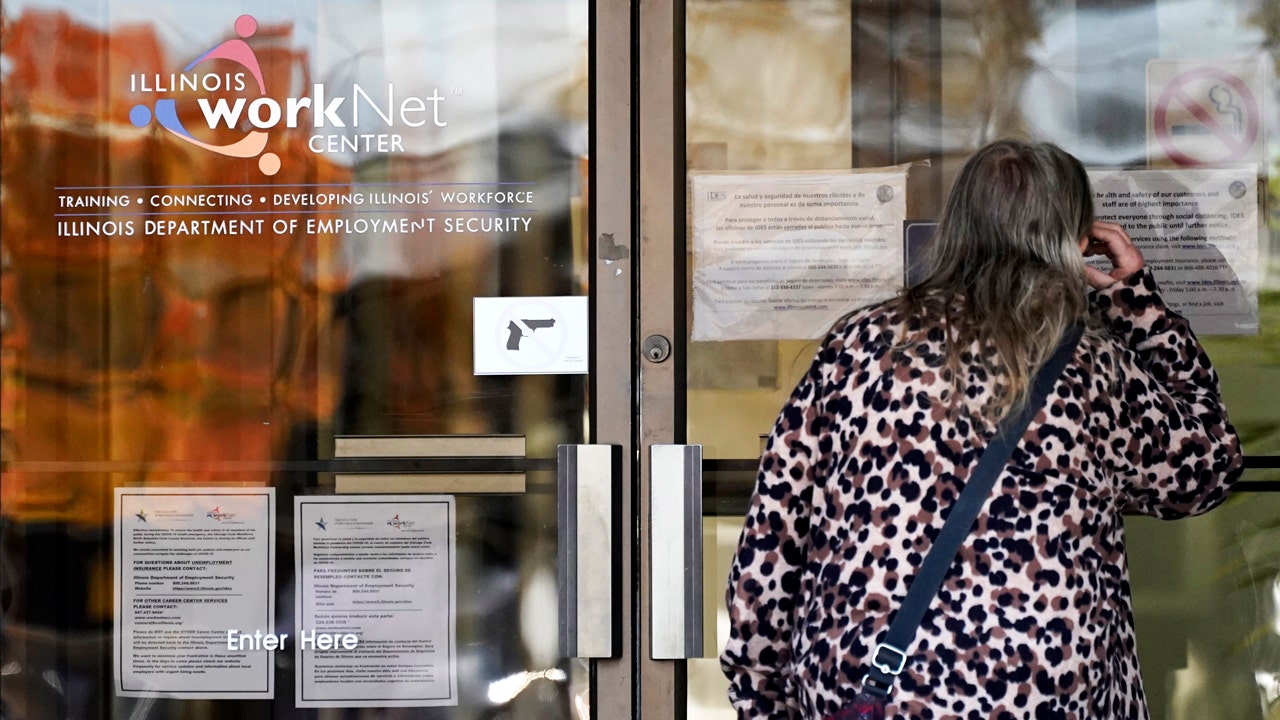Edward Lawrence of FOX Business reviews the December job report.
The number of Americans applying for unemployment insurance for the first time remained high last week, as an increase in COVID-19 infections and new restrictions to help stem the spread of the virus weighed on the recovery of the labor market. .
Figures released on Thursday by the Department of Labor show that 900,000 Americans filed for unemployment benefits for the first time in the week ending January 16, slightly below the 910,000 predicted by Refinitiv economists.
The figure is almost four times the pre-crisis level, but it is well below the peak of almost 7 million that was reached when requests for home stay were first issued in March. Nearly 70 million Americans, or about 40% of the workforce, applied for unemployment insurance during the pandemic.
KEY DEMOCRATS SEE THE $ 900 billion COVID RELIEF PACKAGE JUST BEGINNING
The number of people who continue to receive unemployment insurance fell to 5.054 million, a drop of about 127,000 compared to the previous week. The report shows that about 15.99 million Americans were receiving some form of unemployment benefit by January 2.
Many more Americans are receiving unemployment benefits from two federal programs that Congress established with the approval of the CARES Act in March: one extends aid to self-employed individuals, temporary workers and others who are not normally eligible for benefits, and the other provides aid to those who have exhausted their state benefits.
KEY DEMOCRATS SEE THE $ 900 billion COVID RELIEF PACKAGE JUST BEGINNING
“The current wave of the pandemic does not appear to be subsiding yet and the prospect of new, more communicable variants increases the risk of a prolonged third wave,” said Daniel Zhao, senior economist at Glassdoor. “Although the vaccine offers a light at the end of the tunnel, we are still far from a complete reopening of the economy that could lead to rehiring and preventing further layoffs.”
The federal government renewed these programs at the end of December with the approval of a $ 900 billion bailout law, which includes an additional $ 300 a week unemployment benefit, a single $ 600 stimulus check for most of adults and new financing for a small business rescue program.
Leading Democrats saw the aid package as the tip of the iceberg, and President Biden, who took office on Wednesday, released a $ 1.9 trillion stimulus plan that includes $ 20 billion for vaccine distribution, extended unemployment benefits of $ 400 a week through September; and a third stimulus check for $ 1,400.
